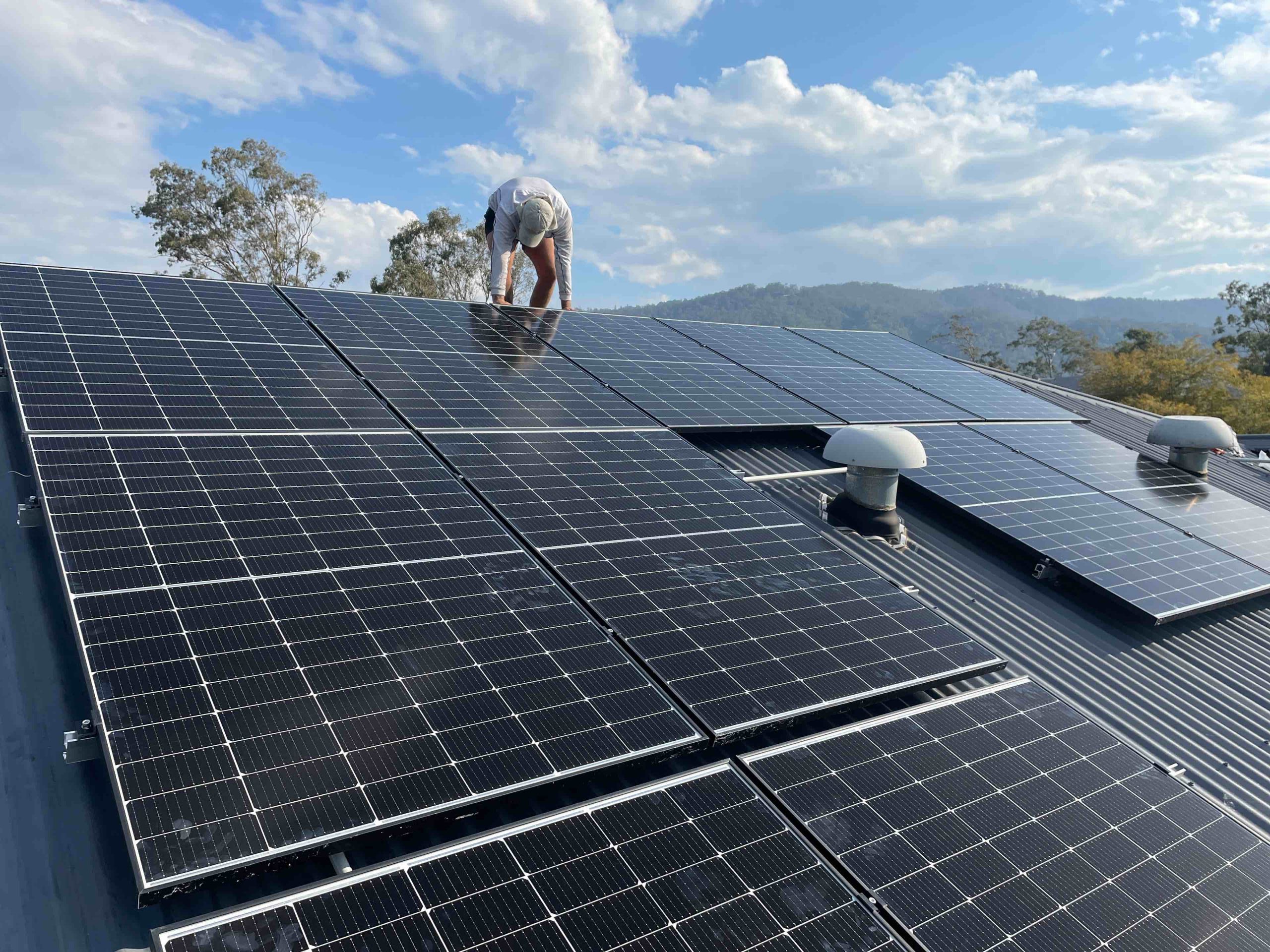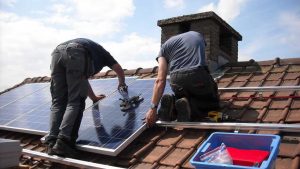Solar energy is a sustainable and efficient source of renewable power. One of the key components of a solar energy system is a solar battery, which stores excess energy generated by the solar panels for later use. Integrating a solar battery into a solar energy system allows for greater energy self-sufficiency and reduces reliance on the traditional power grid. Harnessing the power of the sun through solar panels and utilizing a solar battery is a smart and eco-friendly choice for sustainable energy consumption.

Solar batteries are energy storage systems that store electricity generated from solar panels for later use. This allows homeowners to use their solar power even when the sun isn’t shining, providing a consistent and reliable source of renewable energy. They are designed to capture the excess power that is not immediately consumed and save it for times when energy demand is higher or solar production is lower, such as at night or during cloudy days.
How Do Solar Batteries Work?

Solar batteries work by storing excess energy generated by solar panels during the day for use at night or during times of low sunlight. The electricity is stored in the battery and can be used whenever needed, reducing reliance on the traditional power grid and decreasing energy costs. The technology behind solar batteries has advanced significantly, with many modern units capable of providing not only energy storage but also smart management features that optimize energy use based on your consumption patterns.
What Are the Benefits of Using Solar Batteries?
There are several benefits to using solar batteries in your home:
1. Energy Savings
By storing excess energy generated by your solar panels, you can reduce your reliance on traditional energy sources and potentially save money on your energy bills. The ability to store and use solar energy on demand means less electricity is purchased from the grid, especially during peak rates, leading to substantial savings over time.
2. Energy Independence
With solar batteries, you can store your own energy and use it when you need it, giving you more control over your energy consumption and reducing your reliance on the grid. This independence is particularly valuable during power outages or in remote areas where grid electricity is unreliable or unavailable.
3. Environmental Impact
Using solar batteries helps reduce your carbon footprint by decreasing your reliance on traditional energy sources, which can have a significant environmental impact. By contributing to a reduction in the demand for fossil fuel-generated electricity, solar batteries play a key role in promoting sustainable energy practices.
4. Increased Property Value
Investing in renewable energy sources like solar batteries can increase the value of your property, making it a smart long-term investment. Homes with solar energy systems often sell at a premium and are attractive to buyers who are conscious of energy costs and environmental impact.
How Much Do Solar Batteries Cost in Australia?

The cost of solar batteries in Australia can vary depending on several factors, including the size and type of battery, installation costs, and any additional equipment needed. On average, the cost of a solar battery system can range from $9,000 to $20,000. However, the long-term savings on energy bills can make this initial cost worth it for many homeowners. The investment also needs to be viewed in the context of rising energy prices, where solar batteries can provide a hedge against future increases in electricity costs.
How Do Solar Battery Costs Compare to Solar Power Costs?
When considering solar battery costs, it’s important to compare them to the cost of traditional solar power systems. On average, the cost of a solar power system in Australia can range from $3,000 to $10,000, with the average cost being around $6,000. While solar batteries do add to the initial investment, they also enhance the functionality of the solar power system by enabling energy storage and management.
Is It Worth Investing in Solar Batteries?

When deciding whether or not to invest in solar batteries, it’s important to consider the long-term benefits and potential savings. While the initial cost may seem high, the long-term savings on energy bills can make it a worthwhile investment. Additionally, solar battery technology is continuously improving, which means more efficient and cost-effective solutions are becoming available.
1. Cost Analysis
In order to determine if solar batteries are worth the cost, it’s important to do a cost analysis. This involves comparing the upfront cost of installation to the potential savings on energy bills over time. With the cost of traditional energy sources continuously rising, solar batteries can provide significant long-term savings. It’s also important to factor in the lifespan of the batteries and any maintenance costs that may be associated with them.
2. Location and Energy Usage
The location of your home and your energy usage will also play a role in determining if solar batteries are worth the cost. Homes in areas with high electricity rates or frequent power outages may benefit more from investing in solar batteries. Additionally, homes that use a lot of energy may see a larger return on investment from solar batteries. The climate and amount of sunlight your location receives can also impact the effectiveness of solar batteries.
3. Government Incentives and Rebates

The Australian government offers various incentives and rebates for those investing in renewable energy sources. This can help offset the initial cost of solar batteries and make them a more appealing investment. It’s essential to stay informed about current programs and how they can benefit you as these incentives can significantly reduce the upfront costs.
Real-World Examples of Solar Battery Costs and Savings
One real-world example of solar battery costs and savings can be seen in the case of the Haeusler family in South Australia. After installing a solar battery system, the family saw a 70% reduction in their energy bills, which equates to an annual savings of $1,500. Over time, this will more than cover the initial cost of installation and continue to provide savings for years to come. Such testimonials highlight the economic viability of solar batteries for households across Australia.
How Can I Find the Best Solar Battery Costs?
When looking for the best solar battery costs, it’s important to do your research and compare prices from different providers. It’s also important to consider the quality of the battery and the reputation of the provider. You may also want to consider any additional equipment or installation costs that may be necessary. Reading reviews and consulting with industry experts can also provide valuable insight into which solar batteries offer the best value for your specific needs.
Conclusion
In conclusion, while the initial cost of solar batteries may seem high, the long-term benefits and potential savings make them a worthwhile investment for many homeowners in Australia. By doing a cost analysis, considering your location and energy usage, and taking advantage of government incentives, you can determine if solar batteries are the right choice for you and your home. As the push towards renewable energy continues to grow, solar batteries will play an increasingly important role in helping homeowners achieve energy independence and sustainability.
Please take a look at the Solar Packages we offer: https://djsolar.com.au/solar-panels-solar-energy-systems-installer-brisbane/



 >by American Public Power Association (https://unsplash.com/@publicpowerorg)”
>by American Public Power Association (https://unsplash.com/@publicpowerorg)”


